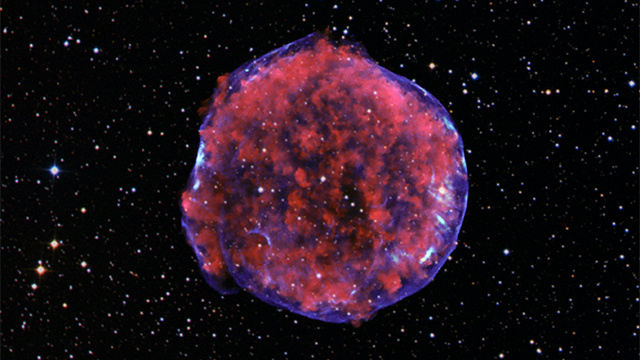This Image Is a Space Shockwave Traveling at 1,000 Times the Speed of Sound
Nov 26, 2013 23:14

Here's some space geek knowledge for you. The Harvard-Smithsonian Center for Astrophysics reports on the discovery of a "reverse shock wave racing inward at Mach 1000" in the Tycho's supernova remnant.
The result: its particles glow like the photograph above.This is what's happening:
When that ejecta rammed into surrounding interstellar gas, it created a shock wave - the equivalent of a cosmic "sonic boom." That shock wave continues to move outward today at about Mach 300. The interaction also created a violent "backwash" - a reverse shock wave that speeds inward at Mach 1000.
The reverse shock wave heats gases inside the supernova remnant and causes them to fluoresce. The process is similar to what lights household fluorescent bulbs, except that the supernova remnant glows in X-rays rather than visible light. The reverse shock wave is what allows us to see supernova remnants and study them, hundreds of years after the supernova occurred.
The reverse shock wave heats gases inside the supernova remnant and causes them to fluoresce. The process is similar to what lights household fluorescent bulbs, except that the supernova remnant glows in X-rays rather than visible light. The reverse shock wave is what allows us to see supernova remnants and study them, hundreds of years after the supernova occurred.







































































